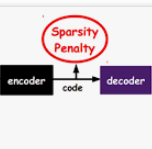The reconfigurable intelligent surface (RIS)-assisted sparse code multiple access (RIS-SCMA) is an attractive scheme for future wireless networks. In this letter, for the first time, the RIS phase shifts of the uplink RIS-SCMA system are optimized based on the alternate optimization (AO) technique to improve the received signal-to-noise ratio (SNR) for a discrete set of RIS phase shifts. The system model of the uplink RIS-SCMA is formulated to utilize the AO algorithm. For further reduction in the computational complexity, a low-complexity AO (LC-AO) algorithm is proposed. The complexity analysis of the two proposed algorithms is performed. Monte Carlo simulations and complexity analysis show that the proposed algorithms significantly improve the received SNR compared to the non-optimized RIS-SCMA scenario. The LC-AO provides the same received SNR as the AO algorithm, with a significant reduction in complexity. Moreover, the deployment of RISs for the uplink RIS-SCMA is investigated.
翻译:重新配置的智能表面(RIS)协助的稀有代码多存(RIS-SCMA)对于未来的无线网络来说是一个有吸引力的计划。在本信中,首次根据替代优化技术优化了RIS-SCMA系统上行链路的转轨,以改进一套离散的RIS阶段转轨的接收信号对噪音比率(SNR)。RIS-SCMA上行链的系统模型是利用AO算法来开发的。为了进一步降低计算复杂性,提出了低兼容性AO(LC-AO)算法。对拟议的两种算法进行了复杂程度分析。蒙特卡洛模拟和复杂程度分析表明,拟议的算法与非优化的RIS-SCMA假想相比,大大改进了SNR的接收信号对噪音比率。LC-AO提供与AO算法相同的SRR的系统模型,其复杂性显著降低。此外,还调查了RIS-SCMA上行链路的配置。




